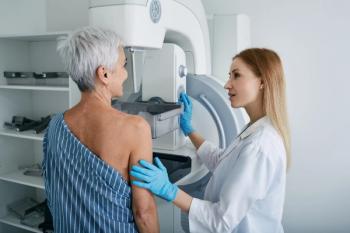
Tumor Marker Testing Fact Sheet
Tumor marker tests include a variety of tests for cancer that can be performed on cells of a tissue sample from a newly biopsied or stored tumor. Tumor marker testing provides the patient and oncologist with vital information about the tumor at the cellular level, expanding traditional pathology reports that are based on tumor size, appearance and staging of the disease.
Tumor marker tests include a variety of tests for cancer that can be performed on cells of a tissue sample from a newly biopsied or stored tumor. Tumor marker testing provides the patient and oncologist with vital information about the tumor at the cellular level, expanding traditional pathology reports that are based on tumor size, appearance and staging of the disease.
Tumor markers are substances often detected in higher than normal amounts in the blood, urine or body tissues of some patients with certain types of cancer.
By providing insight into the genetic mechanisms driving tumor growth, tumor marker tests help guide decisions for timing and treatment choices.
All women diagnosed with breast cancer
Women who have already had a biopsy and know they didn’t receive a tumor marker test may want to ask their physician to contact the lab where the sample was sent and request a tumor marker test be performed on the stored tissue sample.
Tumor marker tests are performed in the hospital’s pathology
Tumor marker tests include:
-HER2 - The newest of the tests determines the presence of excessive amounts of the HER2 gene or protein
-Estrogen Receptors (ER) – Studies have shown that estrogen, one of the female sex hormones, often regulates the growth of breast cancer. Knowledge of whether a tumor is positive or negative for the presence of estrogen receptors is used for prognosis and patient selection for anti-hormonal therapy
-Progesterone Receptors (PR) – To help determine the response to hormonal therapy, the presence of the estrogen-regulated progesterone receptor is now determined routinely. The rate of response is much higher when estrogen and progesterone receptors are positive compared to estrogen receptors alone.
-p53 - p53 is a tumor suppressor gene. Normally, the p53 protein, coded for by the p53 gene stops cells with DNA damage from multiplying until the DNA is repaired naturally or sends the defective cell into programmed cell death. When the p53 gene becomes damaged or mutated, the protein becomes nonfunctional and loses its checkpoint control, allowing cancerous cells to replicate more readily.
-S-phase - In the process of cell replication, a cell cycles through a number of stages. After a cell has duplicated its genetic material and divided through the process of mitosis, it may become inactive or it can start another replicative cycle, beginning with the “S,” or synthesis phase during which genetic material duplicates again . Using a special technique, the number of cells in the S phase can be detected. A higher proportion of S phase than normal is a measure of how actively a tumor is proliferating.
Other tests, used primarily in research, conducted on breast cancer cells include DNA, cytometric evaluation to measure S-phase and/or DNA ploidy and tests of other genes such as Cathespin–D, CEA, and CA15–3.
Generally health insurance will cover tumor marker testing, however you should consult with your health insurance carrier or your physician.
Newsletter
Get the latest clinical updates, case studies, and expert commentary in obstetric and gynecologic care. Sign up now to stay informed.










